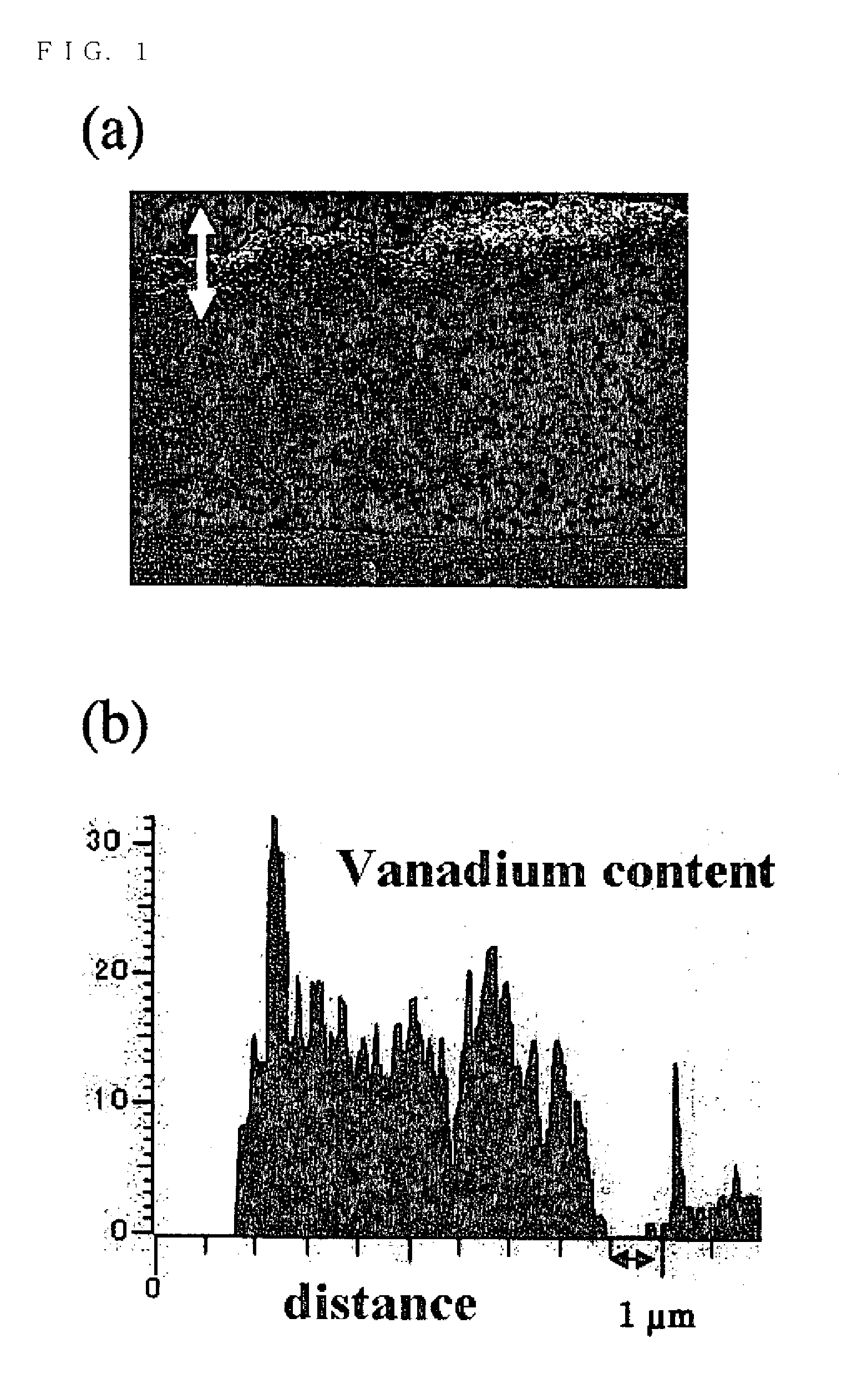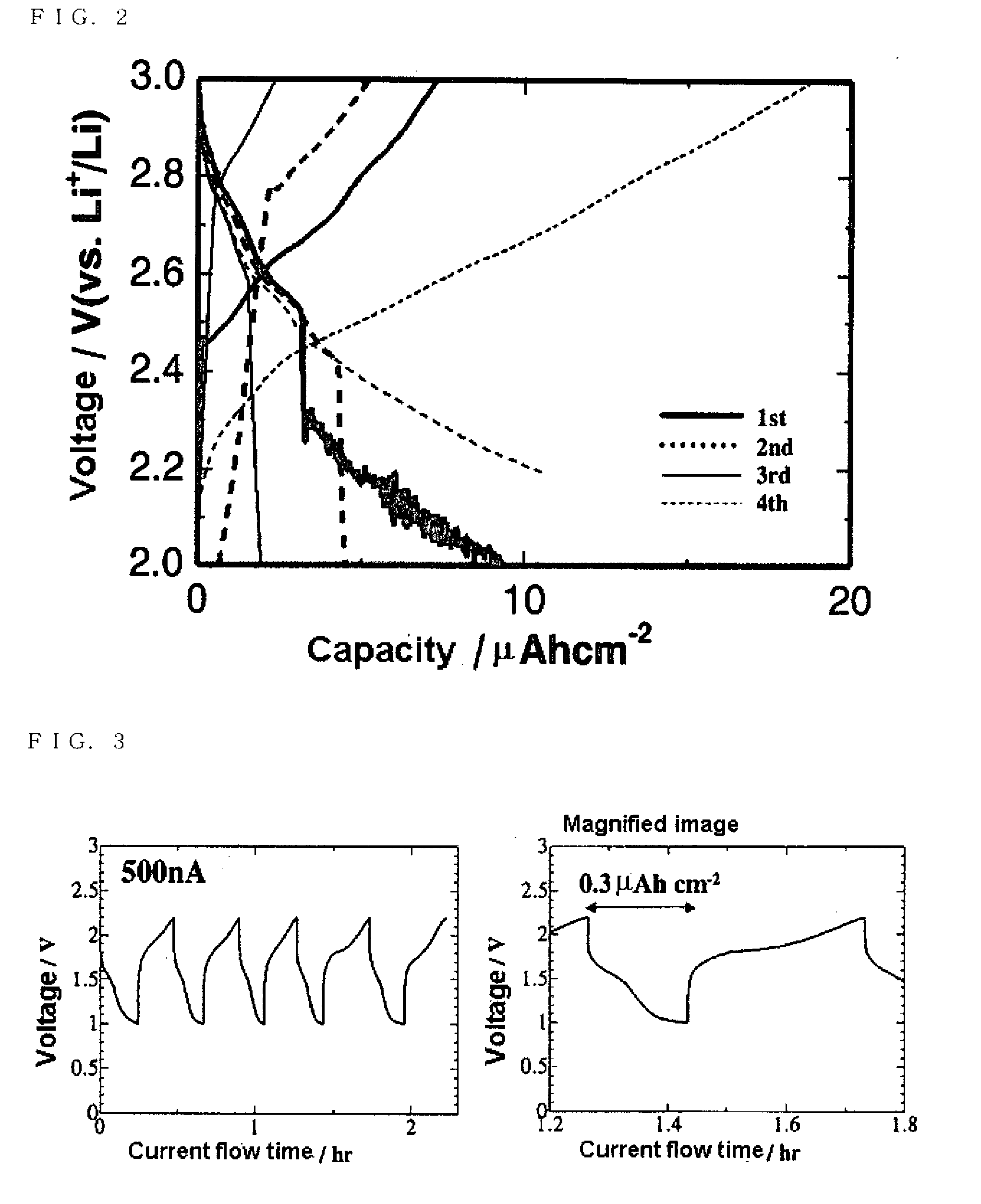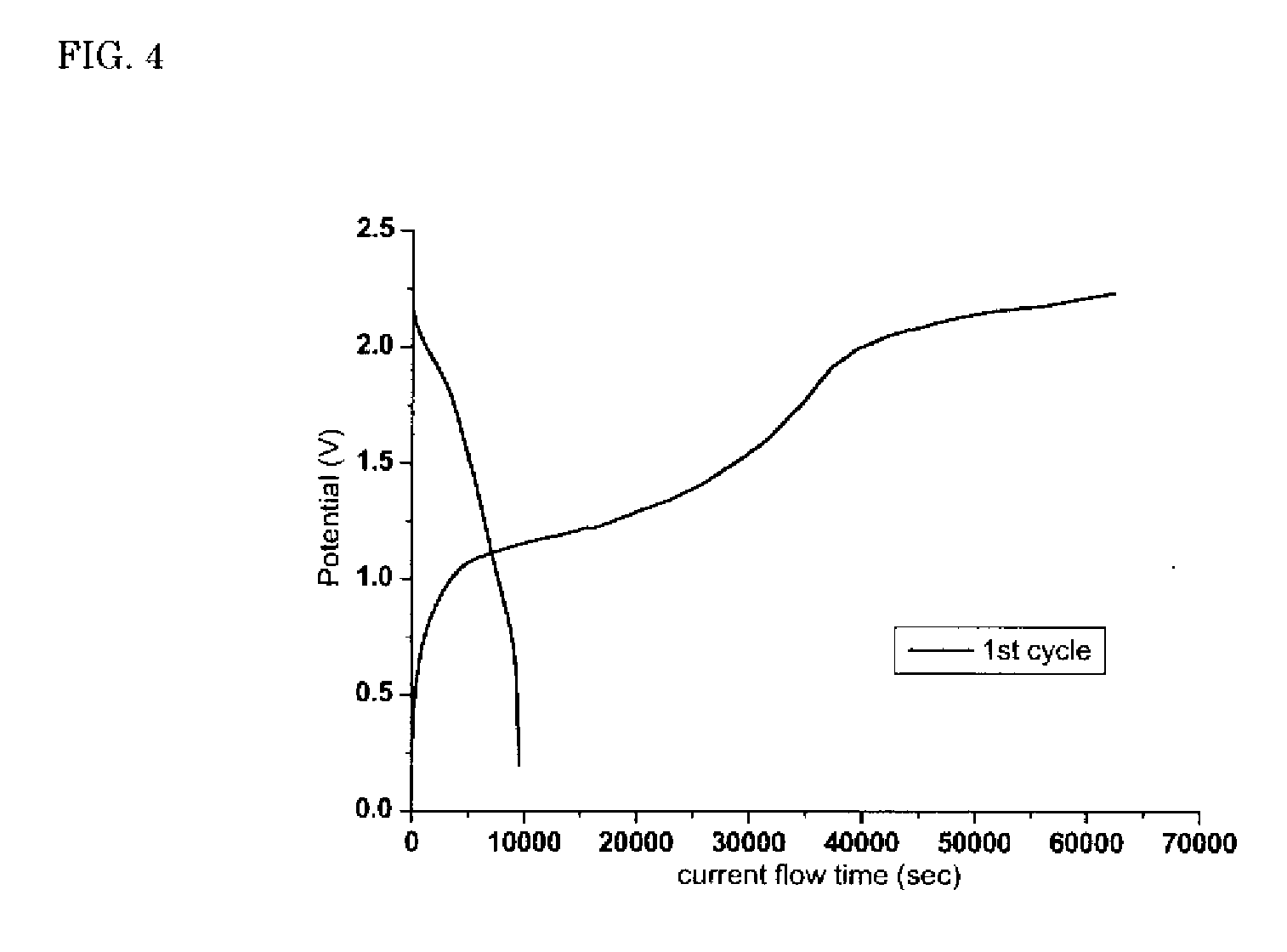Lithium Battery and Manufacturing Method Thereof
a technology of lithium battery and manufacturing method, which is applied in the field of lithium battery, can solve the problems of reducing battery life, reducing battery life, and high cost of providing safety measures, and achieves the effects of low cost, reduced number of processes, and reduced internal resistan
- Summary
- Abstract
- Description
- Claims
- Application Information
AI Technical Summary
Benefits of technology
Problems solved by technology
Method used
Image
Examples
example
Examples 1 to 3 and Comparative Example 1
[0023]A plate-like crystalline solid electrolyte Li3.4V0.6Si0.4O4 was manufactured by solid-phase reaction and this was served as a target to which ion impact was exerted with a high frequency magnetron sputtering apparatus (made by Osaka Vacuum Ltd., Type OSV250) at a frequency of 13.56 MHz, the amount of gas flow to be described later, a pressure of 4 Pa, and an output of 150 W for 24 hours. After that, the target was reversed and ion impact was exerted in the same conditions to obtain three types of electricity generating elements.
[0024]Lithium batteries of the Examples 1 to 3 were manufactured by forming current collectors by sputtering platinum on both sides of each electricity generating element. Then, a positive electrode of a direct current power source was connected to one current collector of the respective batteries and a negative electrode was connected to the other current collector; charging was made to a voltage of 4.0 V at a c...
example 4
[0026]An electricity generating element was manufactured in the same conditions as Example 2 except for that exerting time of the ion impact was set to 5 hours in place of 24 hours. Separately, an electrolyte solution was prepared by dissolving LiClO4 in propylene carbonate (referred to as PC) so as to be concentration of 1 M
[0027]A positive electrode current collector was formed by sputtering platinum on one surface of the electricity generating element, and lithium metal was faced on the opposite surface through the electrolyte solution as a negative electrode. Then, charge-discharge capacity was measured while operation, in which discharging was performed so that a battery voltage became to 2.0 V at a constant current of 10 nA and charging was performed to become to 3.0 V at the same current, was repeated four times. The measured result is shown in FIG. 2.
[0028]As shown in FIG. 2, it was turned out that a substance formed on the surface of the solid electrolyte by the ion impact ...
example 6
[0033]A laminated body was manufactured in the same conditions as Example 5 except for that a Li—Co—O thin film was formed on the surface of a glass ceramic sheet in place of the Li—Mn—O thin film, and charge-discharge capacity was measured. (Li2CO3+Co3O4) powder (molar ratio 7:5) was used as a target for forming the Li—Co—O thin film. The measured result is shown in FIG. 5. As in the case of Example 5, it showed good charge-discharge characteristics.
PUM
| Property | Measurement | Unit |
|---|---|---|
| pressure | aaaaa | aaaaa |
| voltage | aaaaa | aaaaa |
| exerting time | aaaaa | aaaaa |
Abstract
Description
Claims
Application Information
 Login to View More
Login to View More - R&D
- Intellectual Property
- Life Sciences
- Materials
- Tech Scout
- Unparalleled Data Quality
- Higher Quality Content
- 60% Fewer Hallucinations
Browse by: Latest US Patents, China's latest patents, Technical Efficacy Thesaurus, Application Domain, Technology Topic, Popular Technical Reports.
© 2025 PatSnap. All rights reserved.Legal|Privacy policy|Modern Slavery Act Transparency Statement|Sitemap|About US| Contact US: help@patsnap.com



